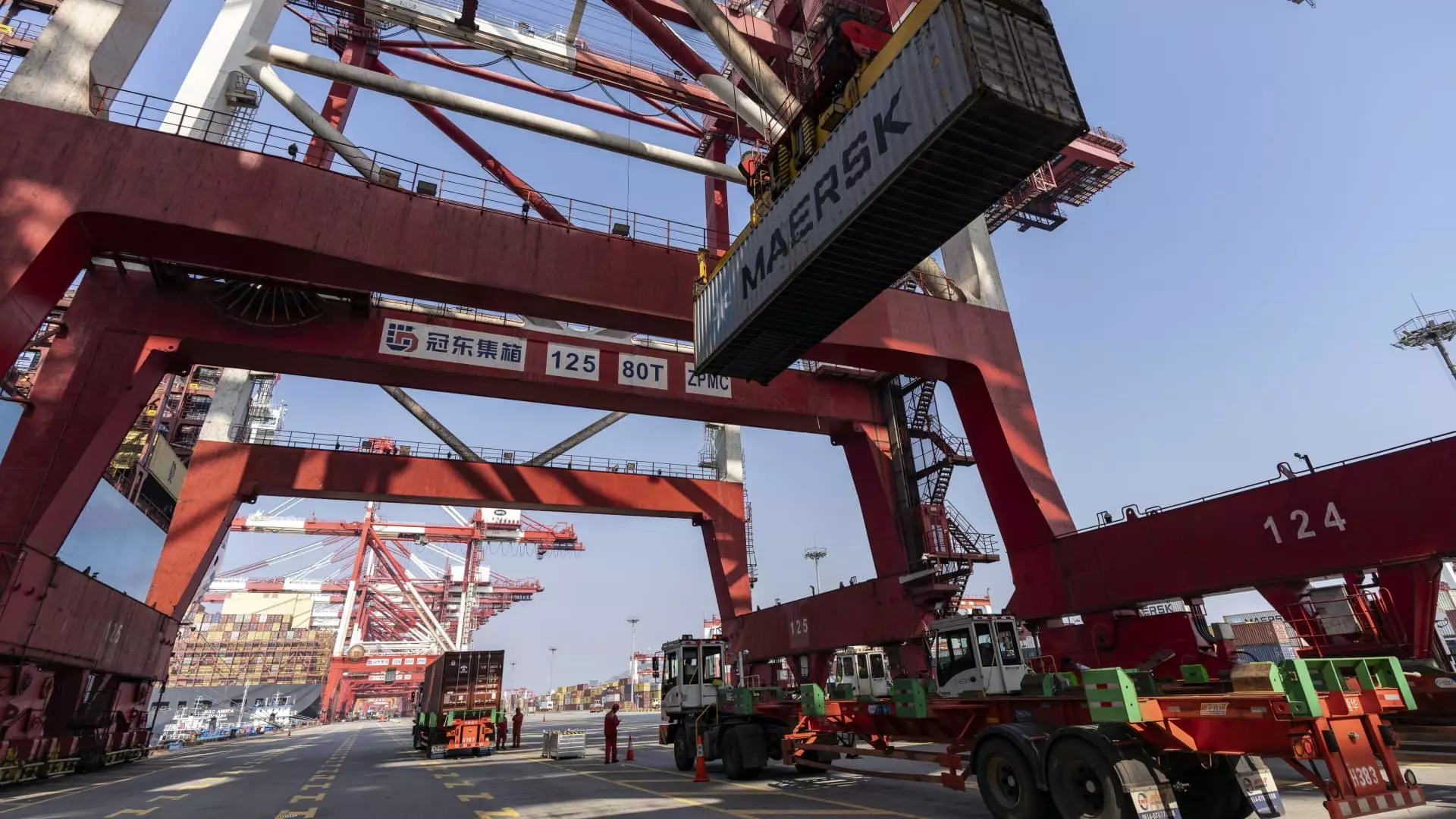China’s recent customs data has sparked new concerns about the nation’s economic vitality as exports and imports both fell short of analysts’ expectations in September. Despite being one of the pillars of growth in China’s economy in recent years, trade figures suggest that hurdles are mounting, possibly signaling a challenging road ahead. With exports increasing by a mere 2.4% year-on-year in U.S. dollar terms, and imports edging up just 0.3%, it is evident that the growth trajectory might not be as robust as projected.
Analysts had anticipated a more aggressive rebound in trade, with estimates predicting a 6% rise in exports and a 0.9% increase in imports. The inability to meet these expectations raises alarms not only for policymakers but for global investors who closely monitor China as a critical engine of global economic growth. This situation reflects the persistent issues plaguing the Chinese economy, including sluggish consumer demand and a significant slump in the real estate sector, which has increasingly begun to trouble one of the largest consumer markets in the world.
Zhiwei Zhang, the chief economist at Pinpoint Asset Management, highlighted that elevated trade tensions and the current fiscal policy stance signify a pivotal moment for the economic future. For years, exports have propelled China forward, but the increasing strain from international tariffs—in particular, from the United States and the European Union—poses a substantial risk to this growth narrative. Policies targeting specific product categories, such as electric vehicles, jeopardize the trade landscape further, indicating the necessity for structural reforms to navigate these shifting waters.
Interestingly, the data also indicated a nuanced development in terms of trade relationships. For instance, while exports to the United States, China’s largest trading partner, saw a modest growth of 2.2%, imports from the U.S. surged by 6.7%. This reflects a duality in trade: while export figures may appear stagnant, the demand for imports highlights an underlying complexity in market conditions.
Economists have speculated that a softening in import volumes may be temporary, predicting a potential rebound as government fiscal desires prompt increased spending. Zichun Huang from Capital Economics argues that the Ministry of Finance’s hints towards augmented fiscal expenditures could stimulate demand for industrial commodities in the short term. If executed effectively, this could revitalize sectors previously hindered by mixed consumer sentiment.
Examining China’s regional trading partners offers further insights. Exports to the Association of Southeast Asian Nations (ASEAN) surged by 5.5%, while imports from this bloc increased by 4.2%. Additionally, exports to BRICS partner Russia experienced a remarkable 16.6% increase, contrary to the 8.4% drop in imports from Russia. Such inconsistencies in trade relations exhibit a patchwork of economic relationships that are evolving as global dynamics shift.
While certain categories such as automobiles maintained a favorable growth rate of 25.7%, other consumer goods experienced declines, highlighting a changing preference landscape among consumers. Categories that thrived included home appliances and integrated circuits, underscoring the technological ambitions of the Chinese economy amidst prevailing volatility.
The backdrop of these trade figures is further complicated by chilling domestic demand. Notably, crude oil imports fell by 10.7% in September, contrasting with the growth in imports of natural gas and coal as China emphasizes energy security. Correspondingly, agricultural imports like soybeans experienced a significant 39% surge, indicating a strategic pivot towards commodities deemed essential for maintaining food supply and security.
Compounding these challenges, the Consumer Price Index (CPI) reported only a 0.1% increase, marking the slowest growth since February 2021. This lack of inflationary pressure may indicate stunted consumer spending, as prices for tourism-related services plummeted ahead of the notably busy holiday season.
Looking ahead, significant data releases from the National Bureau of Statistics are expected to shed light on the broader economic landscape, with GDP numbers for the third quarter and figures for retail sales, industrial production, and fixed asset investments on the horizon. Thus far, investors have remained cautious amidst a backdrop of inconsistent policy signals, with stimulus measures announced yet lacking the concrete specificity hoped for.
As China navigates these turbulent economic waters, the implications of stunted trade growth are profound, foreshadowing potential challenges that might unsettle the previously glowing narrative of the world’s second-largest economy. The upcoming weeks will likely be crucial in determining whether the anticipated policy measures will bear fruit or if deeper struggles lie ahead in the once-mighty export-driven landscape.


Leave a Reply